

White Water Rafting, also still referred to by old timers as “River Running”, is a popular recreational activity where a craft (typically a rubber raft) made for navigating whitewater rapids is navigated through white water rapids for the sheer recreational joy of it. That purely recreational purpose is what defines white water rafting. Every summer many thousands venture downriver on rafts for multiple days and nights, camping along the way. Many thousands more participate in day trips, or half-day trips where available.
The freedom and joy Mark Twain describes his fictional characters Jim and Huckleberry Finn feeling as they rafted down the great Mississippi River, which was essentially a flat water float trip, approaches the feeling of white water rafting. But for all their adventure, Jim and Huck did no white water rafting! Navigation by river for scientific, exploratory, or even hunting and fishing purposes has been around since ancient times. But the recreational purpose for which a raft is taken down the river is what white water rafting is all about! Today, there are hundreds of river outfitters ready to take you white water rafting - one of the best outdoor experiences available on the planet!
Have you ever been backpacking, and know the thrill of getting into otherwise inaccessible landscapes with everything you need right in your pack? Rafting is all the self-contained freedom of backpacking, with all the conveniences of car camping. Plus a heckuva lot of fun in the white water! Even if you’re gone for just a day trip, you can immediately sense the wildness of being afloat on a wild river, coupled with the endless suspense of wondering what’s around the next corner. On multi-day expeditions, outfitters provide meals and other camp necessities like sleeping bags, pads, cots, etc. Generally, all you need to prepare is your own personal duffle bag.
“White water is only the punctuation to an overall poetic experience.” says Peter Grubb, a white water pioneer on the great rivers of Idaho. In other words, many mistake rafting as something strictly for whitewater enthusiasts, or thrill-seekers. As for the thrill of conquering the white water rapids: it is unmistakably a team-building and bonding experience, not unlike fighting a war battle to emerge victorious through each rapid, and at the end of the day. Those who gird up their loins for a whitewater battle realize there’s so much more to a rafting vacation than they had ever anticipated. Perhaps that’s why white water vacations become so impactful - even life changing. The juxtaposition of adrenaline with relaxation in a wild setting, is… memorable. There’s nothing quite like a river rafting trip!
White water rafting, also spelled as one word: “whitewater” is formed when water tumbles and falls, becoming aerated, or infused with air making. The bubbles of air have the effect of turning the water white. You may see this in white crests on the tops of the waves, such as “white caps” on lakes or oceans - or in the case of a whitewater rapid, where the entire river seems to become white with aeration.
Almost anywhere there is a river for white water rafting, you’ll find a history of rafting origins unique to that area, but the very the first commercially operated white water rafting outfitter began as early as 1929 near Vernal, Utah on the Green River. Bus (short for “Busy”) Hatch found so much delight in “running the rapids” downstream from his family’s farmland that he began taking paying passengers on his downstream diversions.
The Green River and the Canyons of the Colorado River had already become a national sensation by John Wesley Powell and his 1869 exploratory expedition. The rivers and canyons had previously been unmapped, and for Powell, the expedition was primarily scientific, most certainly not for the sheer joy of it! Powell’s men, however, were among the very first to attempt the skill of navigating white water rapids in boats, with oars. By the end, they had much more fun running even the biggest of the rapids than they’d had portaging around each major rapid.
Perhaps the little celebrated Stone Expedition of 1909 which followed Powell’s journey from Green River, Wyoming through Grand Canyon to Needles, California is the first paid white water rafting expedition ever? Julius Stone hired Nathaniel Galloway (from Vernal, Utah) to refine his white water boat design used in Galloway’s successful 1897 fur trapping run through Grand Canyon. Galloway’s boat design, and self-taught white water rowing technique would revolutionize the industry to come. Stone, financier of the expedition, invited C.C. Sharp, Raymond Cogswell, and Seymour Dubendorf to join them on an expedition down the river simply “to seek the experience of it for himself”.
After the Great Depression had run its course, Norman Nevills started “Mexican Hat Expeditions” on the San Juan River in southern Utah, with some of the very first fully commercial white water rafting trips through Grand Canyon, starting as early as 1938.
Rafting (commercially and private runs) began to increase in the post-war era, with the surplus of rubber pontoon rafts (left from the war as bridge pontoons). This new diversion of floating downstream happened on the very same rivers and canyons that Powell “opened up” with his exploration trip of 1869, namely, the Green and Colorado Rivers. So, somewhere between the barren plains of Green River city, Wyoming, and the gorgeous depths of Grand Canyon on the Colorado River is the birthplace of modern-day commercial white water rafting trips.
Used by the 1869 and ‘72 Powell expeditions. Whitehalls were designed specifically for tracking straight lines in the flat water of lakes and calm ocean boat harbors. Whitehalls were the modern tech of their time, among the fastest row boats, but they were never designed to be whitewater boats. These can be considered whitewater boats only because they were among the first craft to carry out, and conquer white water rapids.
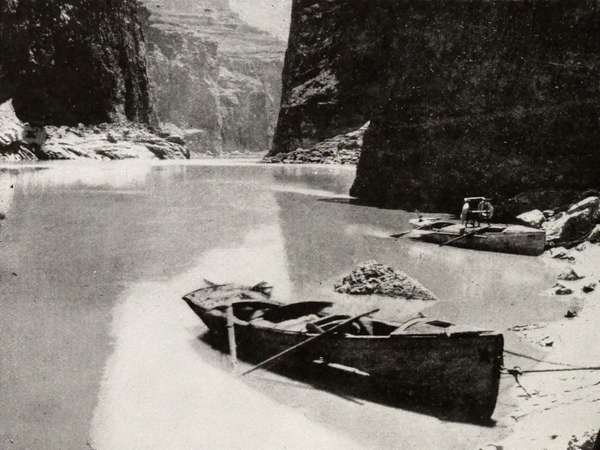
Leave it to the first paid whitewater river guide (Nathaniel Galloway - Julius Stone Expedition) to invent his own boat and style of rowing it. Nathaniel Galloway is the father of the modern-day white water technique of “face your danger”. This downstream-facing method made it possible to see the obstacles, dangers, and current flowing downstream. It also took advantage of the strongest (pulling) stroke to pivot away, or set a ferry angle setting the river current to the boatman’s advantage. This “reading of the river”, rather than picking a channel between the boulders and then rowing like mad and crossing your fingers you chose correctly, was a vast improvement from what Powell and his men carried out.
Galloway’s boat design had upturned ends to create “rocker” which made the craft able to pivot and maneuver midstream far better than the keeled hull of the Whitehall design. These were used successfully on Galloway’s 1897 fur trapping voyage down the Green and Grand Canyon, and upgraded again a decade later for the Stone Expedition. This design was the precursor to the modern-day “Dory” or “drift boat” as fly fishermen might call it.
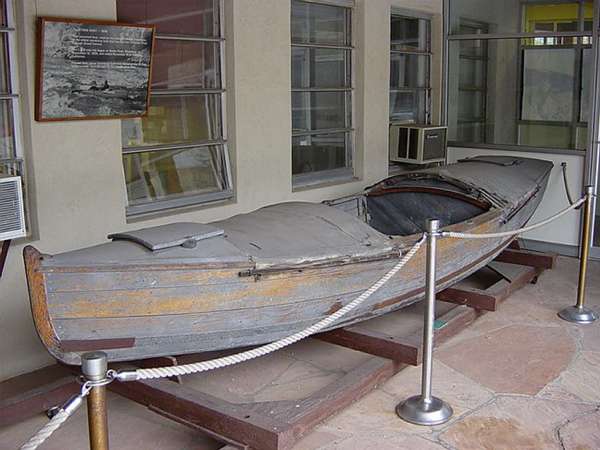

John West is credited with improving upon the logging boats in use in the 1920’s. West was not a logger, but a fly fishing guide on, you guessed it, on the McKenzie River in Oregon. Tired of nearly pulling his arms out, he followed the inspiration that Galloway took with upturned ends on his 16 foot boats. The bottom was wide, specifically to create stability for the fly fishermen who angled their way down through whitewater rapids as they cast their caddis flies into eddies behind boulders. The boats were an evolution specific to that area, hence their name.

A former boatman for Norm Nevills, P.T. Reilly tried some upgrades on the old cataract boats, but it wasn’t until fellow boatman Martin Litton introduced Reilly to the Mckenzie Drift Boats, that something new really began taking shape. The ultimate design seemed inevitable, based on the evolution that was taking place already. Litton went on to start “Grand Canyon Dories” which is now operated by OARS. Dories are also used by Grand Canyon Expeditions with motor rig as a support boat.
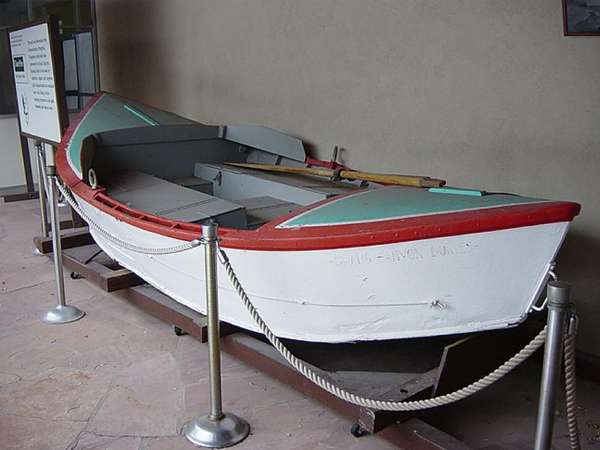
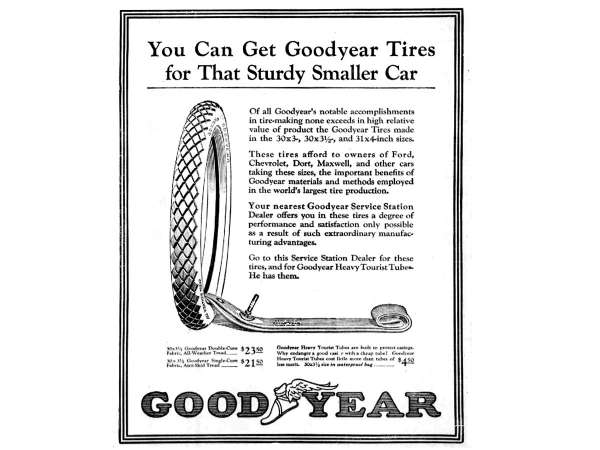
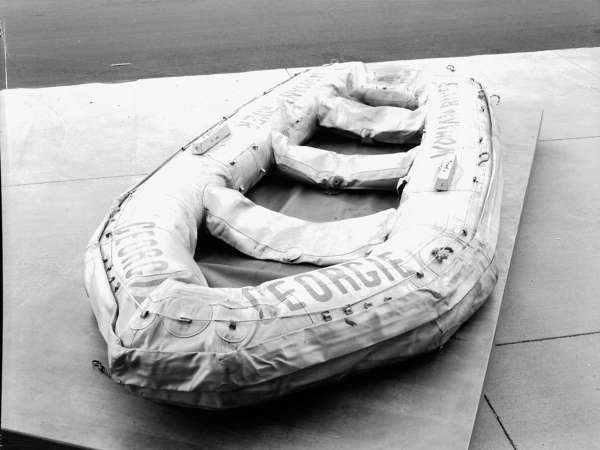
The “ten man rafts” were built with rigidity for sea waves, but not built for strapping the kinds of boxes of equipment needed for multi-day river expeditions. While ten-mans were still reliable standby rafts for the budding commercial river rafting industry in the post-war era, there was another inevitable iteration of rubber raft floating into view. The large oval pontoons, and “sausage” tubular pontoons used in WWII, the Korean Conflict, and beyond, were readily available in post-war time, just as the ten-mans were. But it took a little more creativity and ingenuity (rigging) to convert the bridge pontoons into rafts ready for whitewater expeditions. Three main “big rigs” or “baloney boats” as some called them, came onto the scene:
Georgie White, “Woman of the River”, or Georgie White Clark, or just plain “Georgie” to most river runners, changed the ball game for commercial river rafting. Georgie was already known as “that crazy lady of the river” with her confident, hardy style. Some time in 1954 she’d grown tired of flipping the three “ten-man rafts” over after bad runs through the large rapids of Grand Canyon and decided that perhaps tying all three of them together would act as ballasts and prevent a flip altogether. It was ugly, but it worked. The Georgie-Rig was born. Oarsmen at each end of the rig would do their best to maneuver the beast through rapids, often making it through! Seeing the wisdom of “bigger is better” she adapted the same triple-rig design to the gargantuan oval bridge pontoons with a frame strapped over each one.
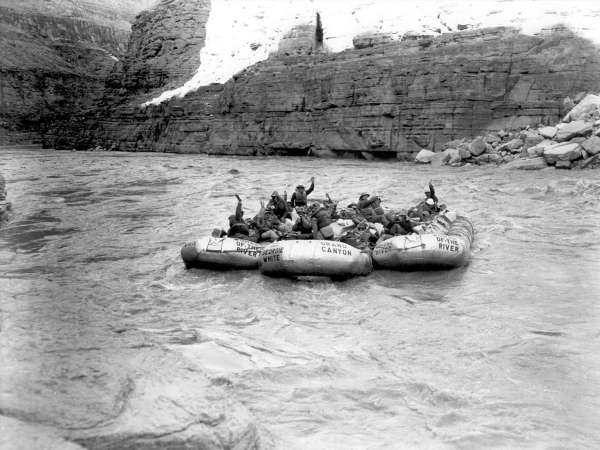
Scant information exists online about the S-Rig, but the S-Rig is one of the most ubiquitous designs of all the large motorized pontoon rafts, as it is used by nearly all motorized rafting expeditions. The design is simple, combining the main oval bridge pontoon with two “outrigger” sausage pontoons on the sides. The first incarnation of the S-Rig, was ? Sanderson… ? The advantage of these rigs was stability without the ungainly width of, say, a Georgie-Rig. Solid, stiff frames were custom built (in a variety of configurations by the varying river companies that were beginning to pop up in the early years of Grand Canyon commercial rafting (1958-1972). The rigid frames running the length of the pontoon oval kept the raft stable in large waves, but also with a tendency to punch through the middle of the wave between the crest and trough. Passengers on an S-Rig sit primarily sideways, against the soft duffle load roped under the tarps.
The naming convention had been established by the time Jack Currey invented his J-Rig, but the evolution of the large pontoon rafts from “S” to “J” was not as much evolutionary (nor alphabetical) as it was accidental! The J-Rig was made from five “sausage pontoons” lashed together, lacking an oval entirely. The reason? The boxcar load of surplus pontoons Jack had ordered to Salt Lake City arrived with only one or two useful ovals, with all the others being just sausage! Jack had a trip scheduled with passengers for a Grand Canyon trip and needed to rig something together! The design worked better than anticipated, and the evolution of the J-Rig was good enough for a patent in 1972. The J-Rig is used exclusively by the company that Jack Currey founded, Western River Expeditions in Grand Canyon, and Cataract Canyon in Utah, on the large waves of the Colorado River.
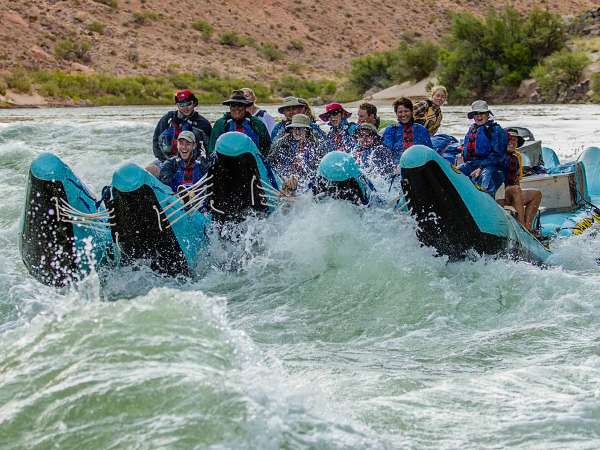
Pontoon rafts introduced the ability to carry heavier loads. The idea of strapping a solid wooden or metal frame over the pontoons to carry the load was a natural step. Slinging the load lower into the oval pontoons was also a natural reaction to avoid top-heavy rafts, and simply to take advantage of the space. This became known as a drop floor. Western River Expeditions, on their exploratory run of the Rio Grijalva and El Sumidero (now under reservoirs) employed this by ripping out the rubber floor of their large oval rafts and replacing it with plywood flooring suspended by chains that wrapped over the pontoon. The natural result was a self bailing floor where water lapped up into the load between the rubber and the plywood as it flexed over the waves.
Modern rafts (as of the 1990's and onward) have an inflated floor that is lashed to the oval raft pontoons. Grommets allow the water to lap in and out of the boat. An elegant solution to having to bail water out of the boat endlessly before, during and after every rapid.
Today, the iconic, ubiquitous shape of rafting is basically a diminished size of that original oval bridge pontoon, with a rigid frame for cargo strapped to the top side. Paddle rafts are essentially the same, only without the frame or cargo.
An Oar-Rig, obviously, uses oars. But what makes it an oar and not a paddle? The difference is mechanical leverage, with a pivot point (oar lock) in the middle. A guide sits at the helm, in the middle of the raft and applies forward or backward leverage to the oar handle for propulsion and navigation. An oar is generally much larger than a paddle. A paddle is completely manual propulsion, without a mechanical oar-lock for leverage.
The experience in a paddle raft can be one of high adventure, depending on the class of white water, and the skill level of the group you are with. Paddlers listen carefully to commands barked out by your paddle captain at the rear of the boat. The guide, or paddle captain, will steer the raft with a paddle, providing more rudder than propulsion. As orders “left side forward” or “right side back” are shouted, you collectively propel and navigate the white water rapids.
A hybrid raft is sometimes seen on the river, called a “paddle assist” where guide sits on a frame at the rear of the paddle raft with oars, rather than just a paddle/rudder method of steering. Typically this is used on slow water so paddling all the time is not required by guests.